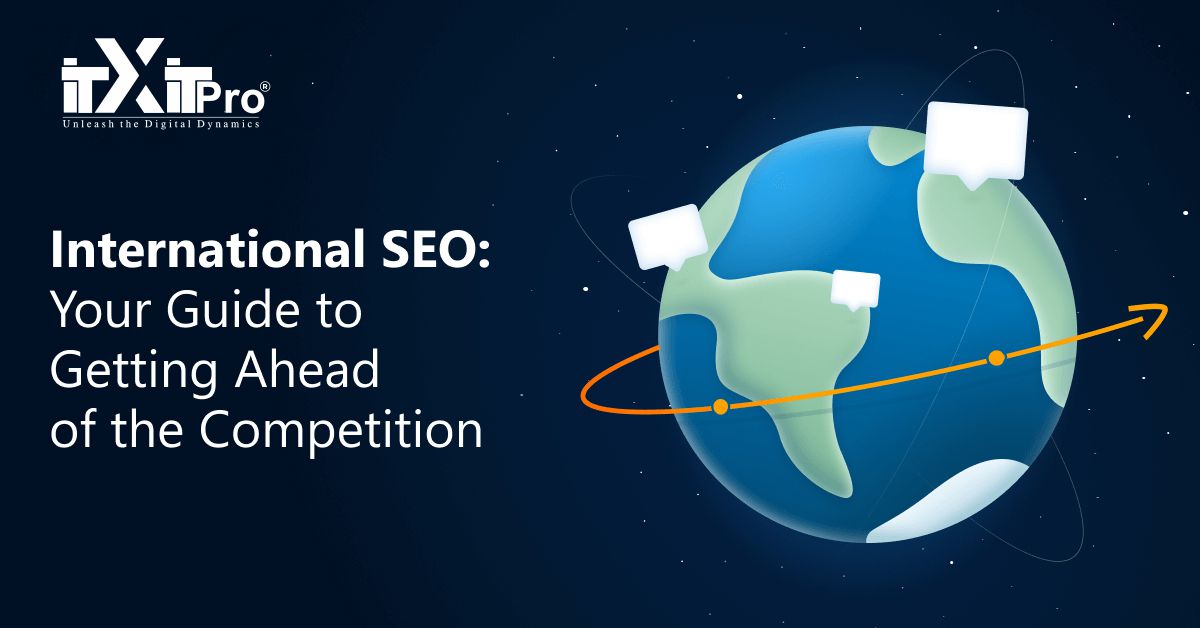Introduction

Search engine optimization is basically about preparing and optimizing your website in such a way that the website can be found easily in the national search engines, preferably in the top positions.
However, SEO in India is not the same as SEO in Canada or the USA or even China. Every country has its own habits concerning the design and user experience of a website and also concerning the search terms of a search engine. What works well in India can, to an extreme, minimize sales in the USA and lower the number of users. This guide is intended to help you understand what is important and what to consider when performing international SEO for a website.

Which search engines are used worldwide?
Although Google has a market share of 87% worldwide searches and is therefore also a market leader in almost all countries, it is not the only search engine that is available to the world. In addition to Google, there is, for example, the search engine Bing, which also has a significant share. In China (Baidu), Russia (Yandex) and the Czech Republic (Seznam), search engines other than Google are predominantly used. In mobile search, however, Google has a market share of almost 97%!
So, when doing international SEO, it’s important to consider all the big players in a certain country and optimize your website accordingly for the best results.
6 Things To Ensure Effective International SEO
1. The hreflang tag

So that search engines can assign each individual page to a country and a language, the integration of the hreflang tag on the domain is required. The categorization of the website into a country and a language is the basic requirement for successful SEO. There are two important formats for this: for the “language code” it is the ISO 639-1 format and for the “country code” it is the ISO 3166-1 Alpha 2 format.
2. As many external links as possible from the target country

It is already known that a successful search engine optimization on Google also requires a good internal and external link structure, which in this case accounts for up to 50% of the SEO.
On international sites, the origin of the external links also plays an important role. So it is important to build a trustworthy and topic-related link network in the country of origin.
Exception: The link network does not play a role for the search engine Baidu.
Expert tip: A backlink analysis per country is useful to identify and systematically expand your link network.
3. Create UX design per country

One and the same design for several countries with different domains or URLs is the norm for most international websites. But just because a design works in India, for example, doesn’t mean success in the USA or even in the Asian market. Different countries, different customs – this also applies to websites and their design and usability.
Therefore, when developing the website design, you should also take into account the specifics and customs of the respective target country.
4. Different search terms

Search terms should also be adapted for each country because these can vary greatly based on cultural differences and importance. Even in countries that supposedly speak the same language, the relevance of the individual keywords is often different. Therefore, conceptual differences should be taken into account in keyword planning. In general:
Different countries, different search behavior – do not use literal translations
Expert tip: Also, examine keywords for their likelihood of good positions. This results from the competition for a keyword concerning the search volume.
5. Adhere to the on-page signals for each country

Send the right country signals to the search engine. The so-called country indicators have been part of Google’s algorithm for many years. The national orientation of a website is checked and the target country is determined based on the constantly upgrading algorithm. For example, for a German user, websites are mainly displayed that have local content and have thus been assigned to the German market by Google, i.e. that could have a higher relevance for the user in the target country. However, things quickly change when you are targeting another country.
A very important aspect of the correct on-page signals is the use of the mother tongue of the respective country. In addition to using the right keywords, attention should also be paid to country-specific peculiarities, language styles, units of measurement, currencies and, above all, to the correct contact addresses, because websites with domestic contact addresses are preferred.
6. Avoid duplicate content

In addition to the on-page signals, the content should also be adapted for different countries. Identical texts in two different countries lead to duplicate content on Google. The problem with this is: Google rates duplicate content negatively in many cases or cannot correctly assign the versions, so only one website is displayed at a time.
It is, therefore, crucial to provide different content even if the language of the country versions remains the same. Ideally, you should create your own texts for each country version, written by native speakers. The following points must always be observed:
- URLs
- Metadata such as “Title” and “Description”
- Navigation wording
- Headings and body content
International SEO Checklist

- Check whether and how much organic and total traffic comes from other countries or is in a foreign language to define the correct domains.
- Do not translate search terms, instead check the organic visibility for relevant countries or languages and find out which keyword queries are relevant in which countries or for which languages.
- Based on this, you can carry out keyword research for the relevant countries or languages from which there is sufficient traffic to identify a suitable keyword set.
- Do not use country flags as icons for language settings. Due to confusion between the language and the country, it is better to use the name of the language in its original language, e.g. instead of “Spanish” it should be “español”.
- Create added value content for the respective country and activate corporations to gain links from the country.
- Integrate readable location information, i.e. as open text on your page.
- Submit the location and language via the Google Search Console or formerly Webmaster Tools (menu item: International orientation) so that Google can better assign your website. This is recommended in addition to the integration of the hreflang tag.
- If possible, write individual texts for each country to avoid duplicate content.
- Measure your success by creating individual data views in your tracking tool for each country or language.
- Revise your content on the respective country pages based on the analysis of your data. Use the evaluation of the keywords from your internal site search for this.
Common International SEO Mistakes
Error 1: Wrong domain strategy
When it comes to international websites, the domain stands and falls with the concept. An unsuitable domain strategy can lead to a loss of ranking or to impressions in the wrong target market.
The right domain structure results, among other things, from your country’s markets. In which countries do you sell the most? Where do you export most of your goods to? Which countries is the main traffic coming from to your website? All of these should be kept in mind when formulating a domain strategy.
Error 2: Incorrectly integrated hreflang tag
The easiest way not to go wrong is to include the hreflang tag for every single domain or directory that you manage. To do this, first, write the ISO code of the language and then the ISO code of the country separated by a minus in the tag (ISO codes see above). The hreflang tag for the USA, for example, looks like this:
<link rel = “alternate“ hreflang = “en-US“ href = “https://www.domain.com/en-us/“>
Mistake 53: Random links
This is primarily about the external links, which are so much more relevant than internal links – especially on international websites. The most common mistake here is linking to the main domain without considering the country page.
A link from a Spanish URL should also refer to the Spanish country page. It is advisable to create an overview for this, which is regularly checked for the relevant target page.















